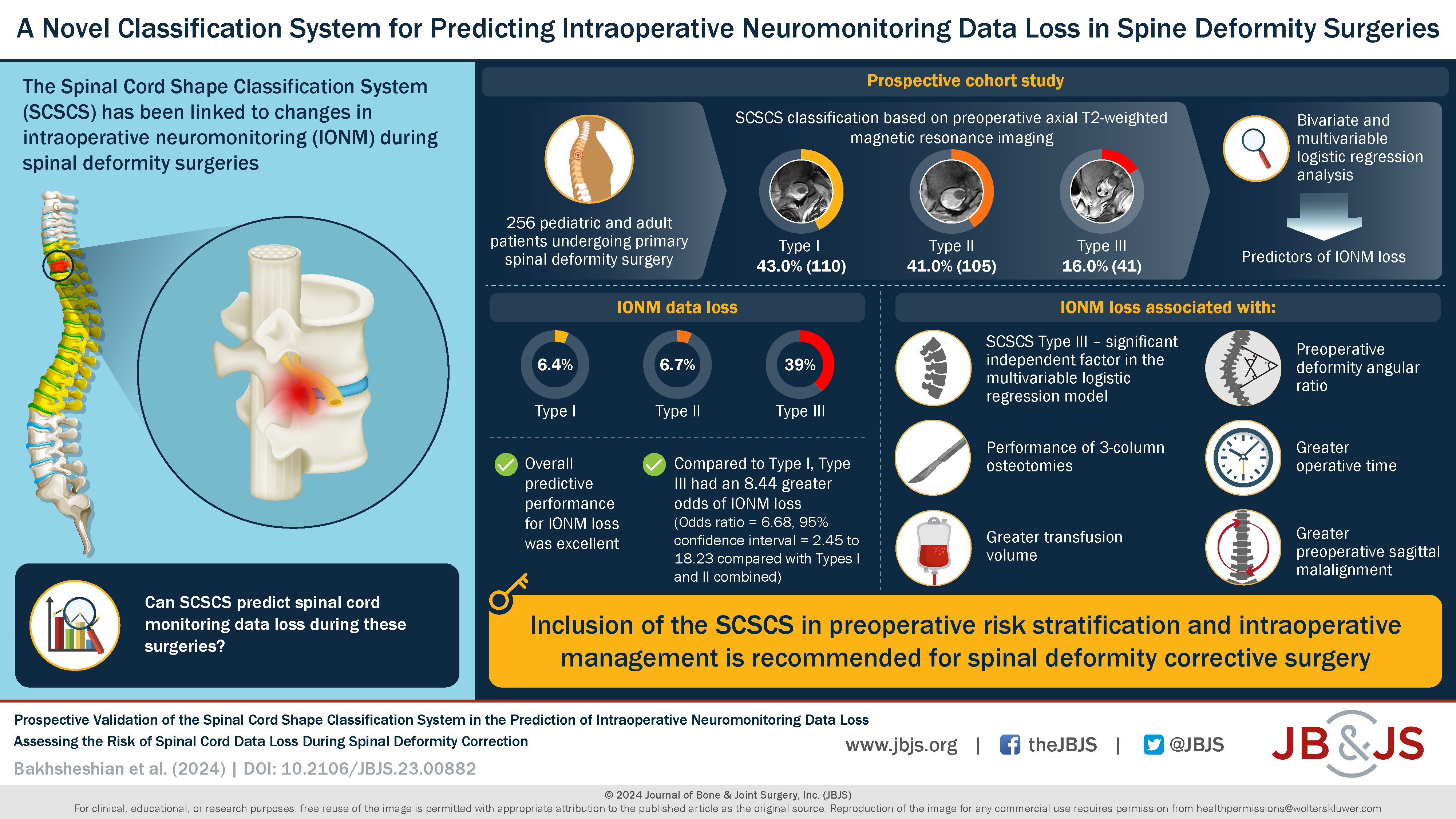In a study now published in JBJS, Bakhsheshian et al. sought to prospectively validate use of the Spinal Cord Shape Classification System (SCSCS) to identify
Category: Infographic
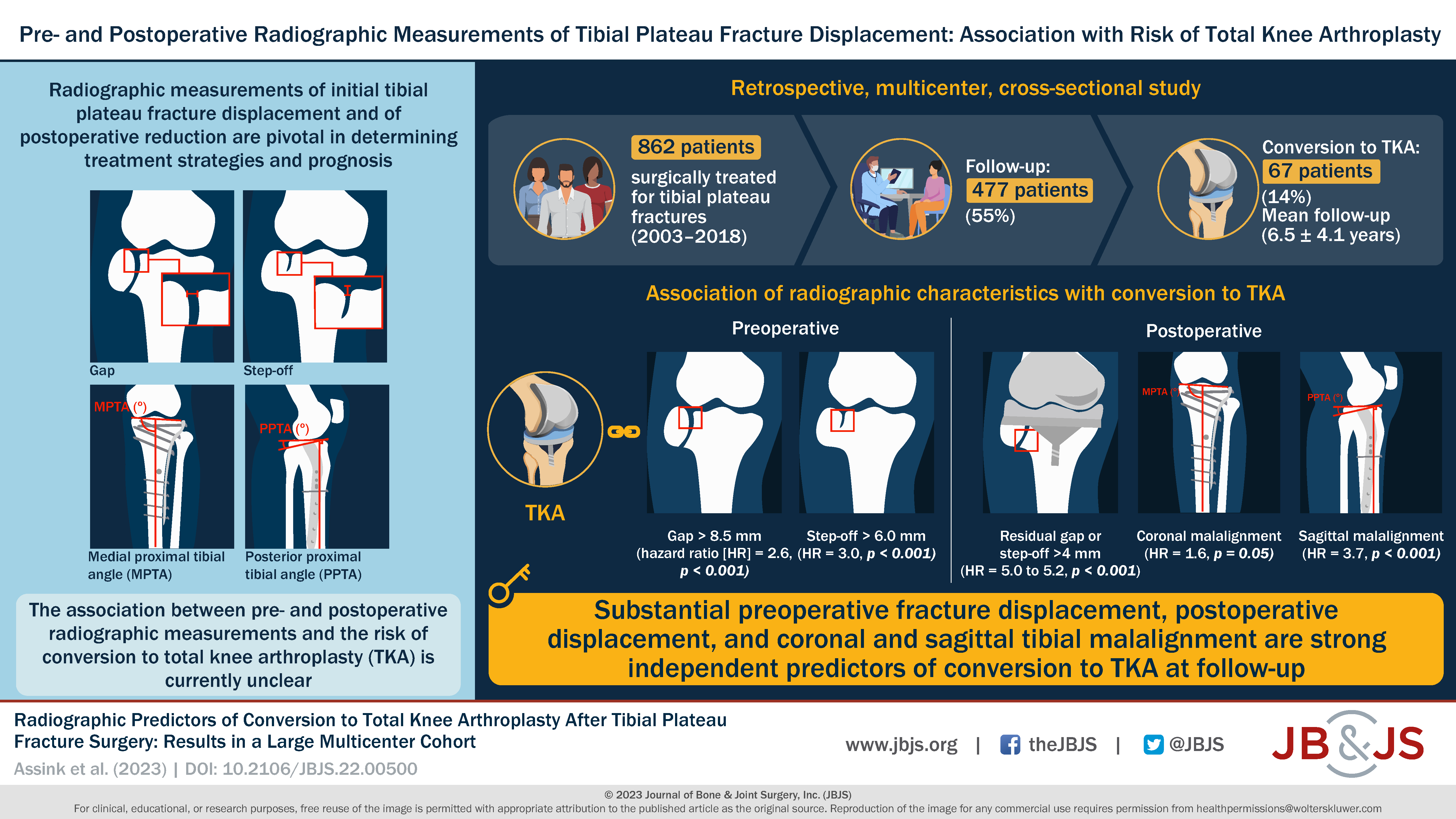
A new multicenter investigation by Assink et al. in JBJS explores the association between radiographic measurements and the risk of conversion to total knee arthroplasty
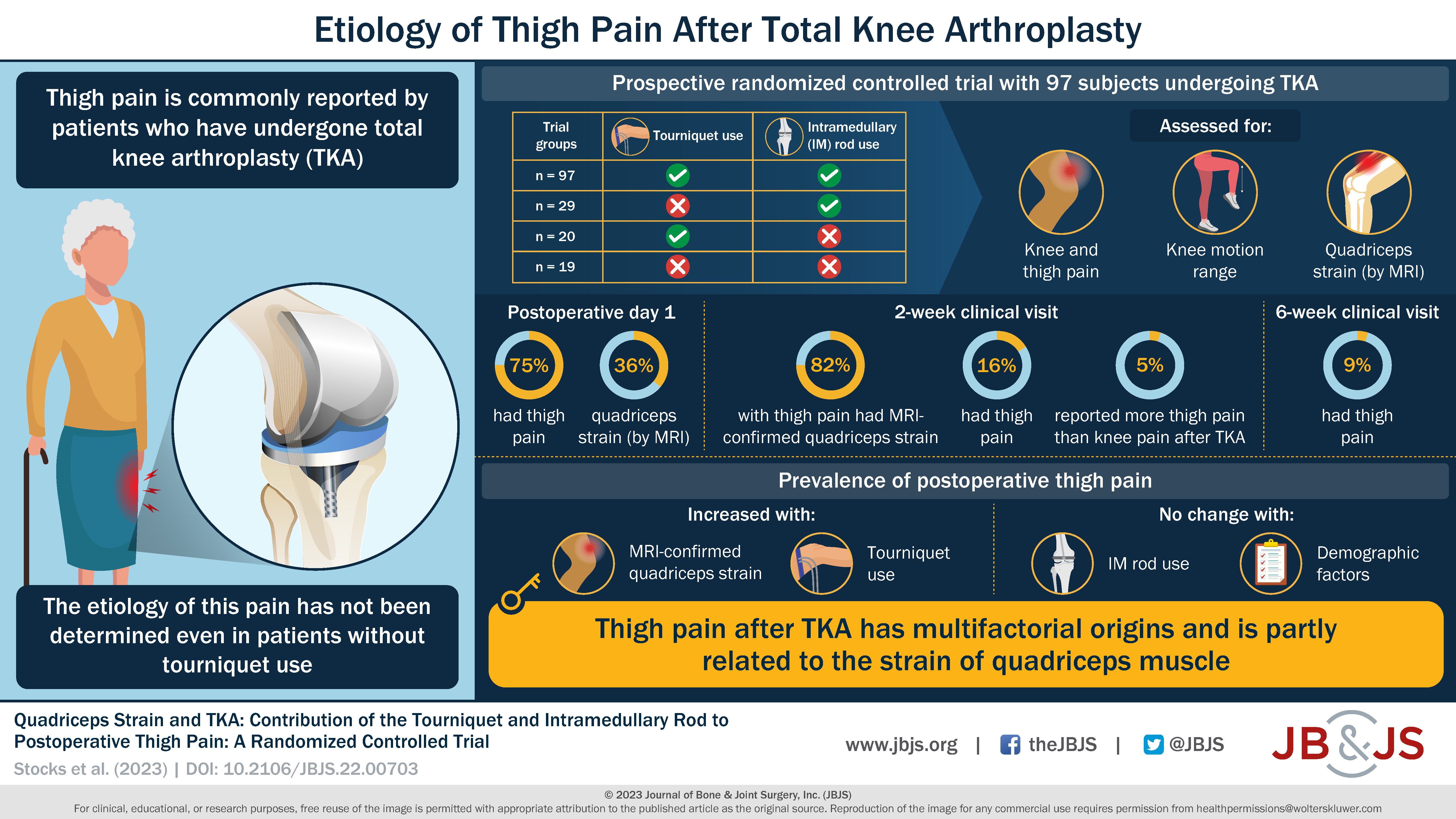
A new Level-I investigation by Stocks et al. explores thigh pain after total knee arthroplasty (TKA). Tourniquet use, intramedullary rod use, and quadriceps strain are

Compared with isolated ACLR, combined ACLR and ALSA resulted in a reduction in persistent rotatory laxity and higher rates of return to preinjury and competitive
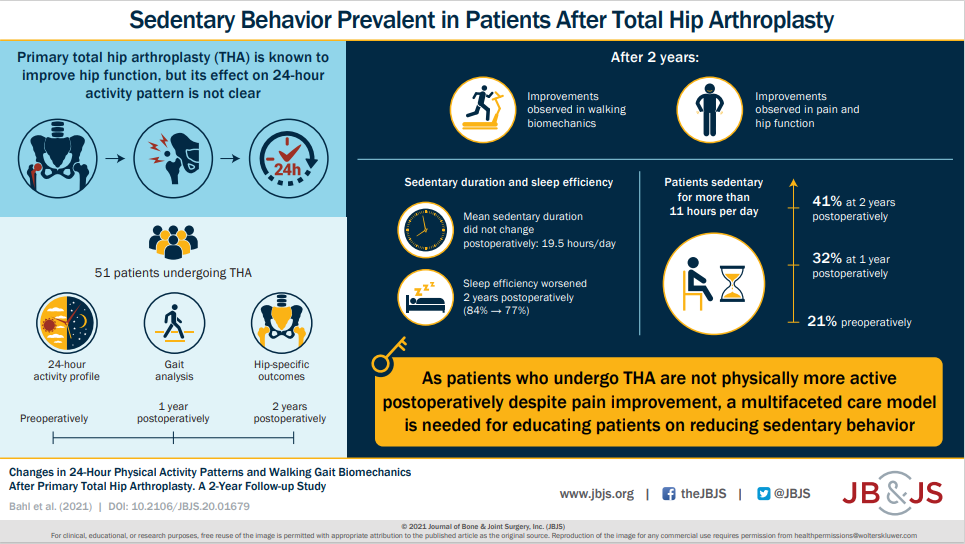
Together with improvements in self-reported pain and perceived physical function, patients had significantly improved gait function postoperatively. Read the full article here.

Thirty-eight patients with schizophrenia were compared with 170 geriatric patients without schizophrenia who underwent a surgical procedure for a hip fracture. Read the full article
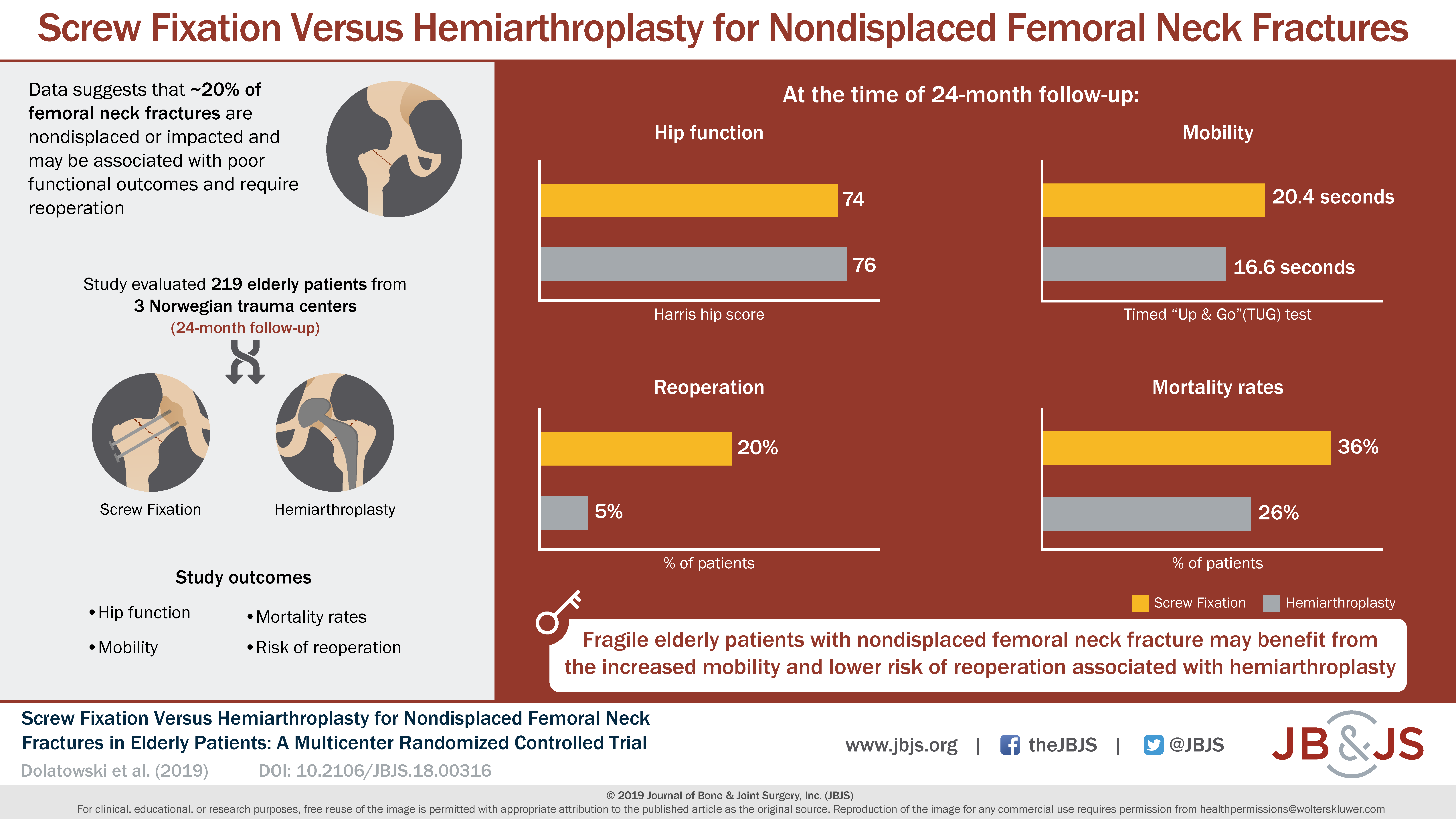
Full Article Background: Elderly patients with a displaced femoral neck fracture treated with hip arthroplasty may have better function than those treated with internal fixation.
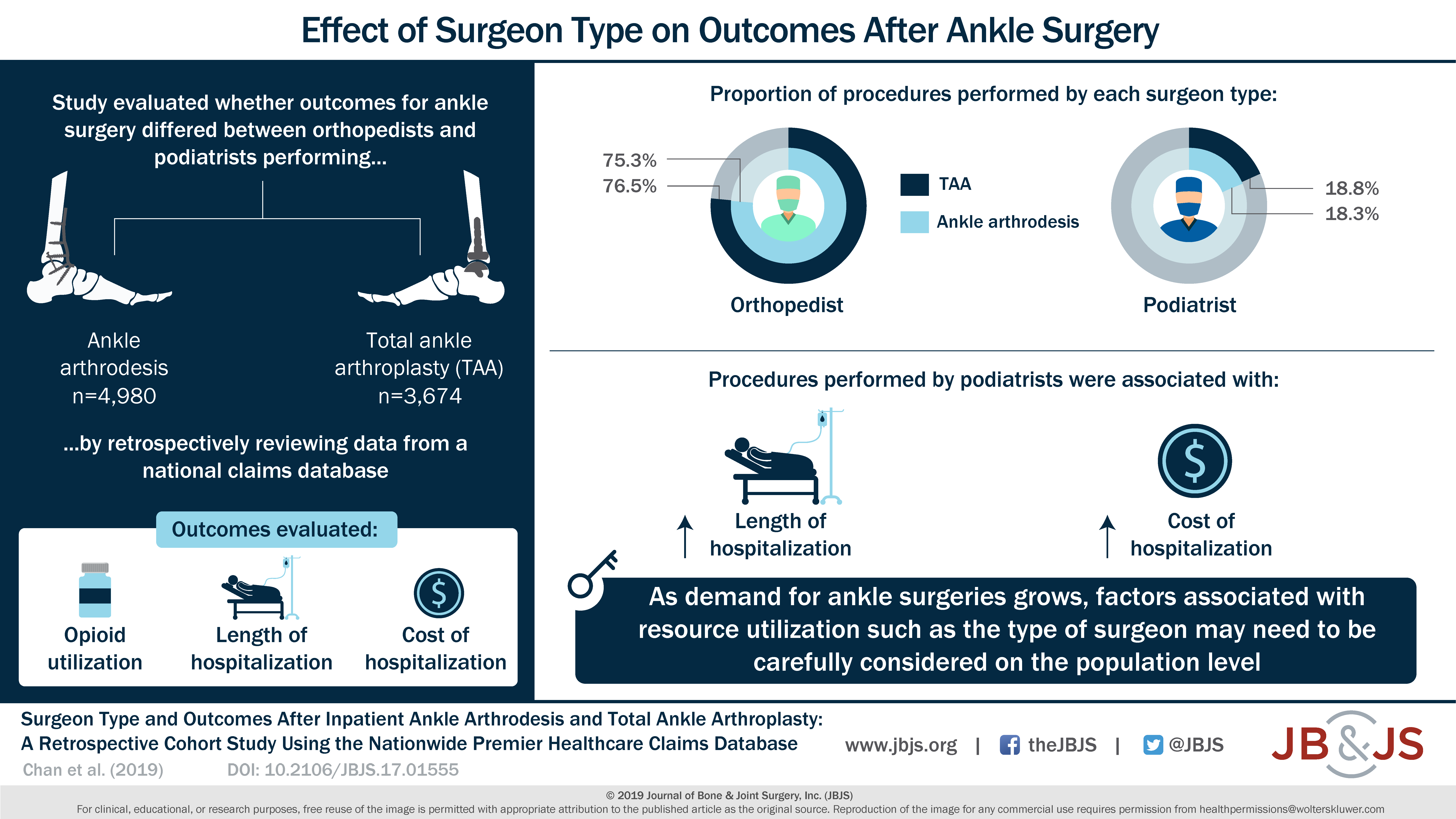
Full Article Background: Two main treatments for end-stage ankle arthritis are ankle arthrodesis and total ankle arthroplasty (TAA). While both procedures can be performed either
Full ArticleCannabinoids are among the psychoactive substances considered as alternatives to opioids for the alleviation of acute pain. We examined whether self-reported marijuana use was
Full ArticleOverlapping surgery occurs when a single surgeon is the primary surgeon for >1 patient in separate operating rooms simultaneously. The surgeon is present for

